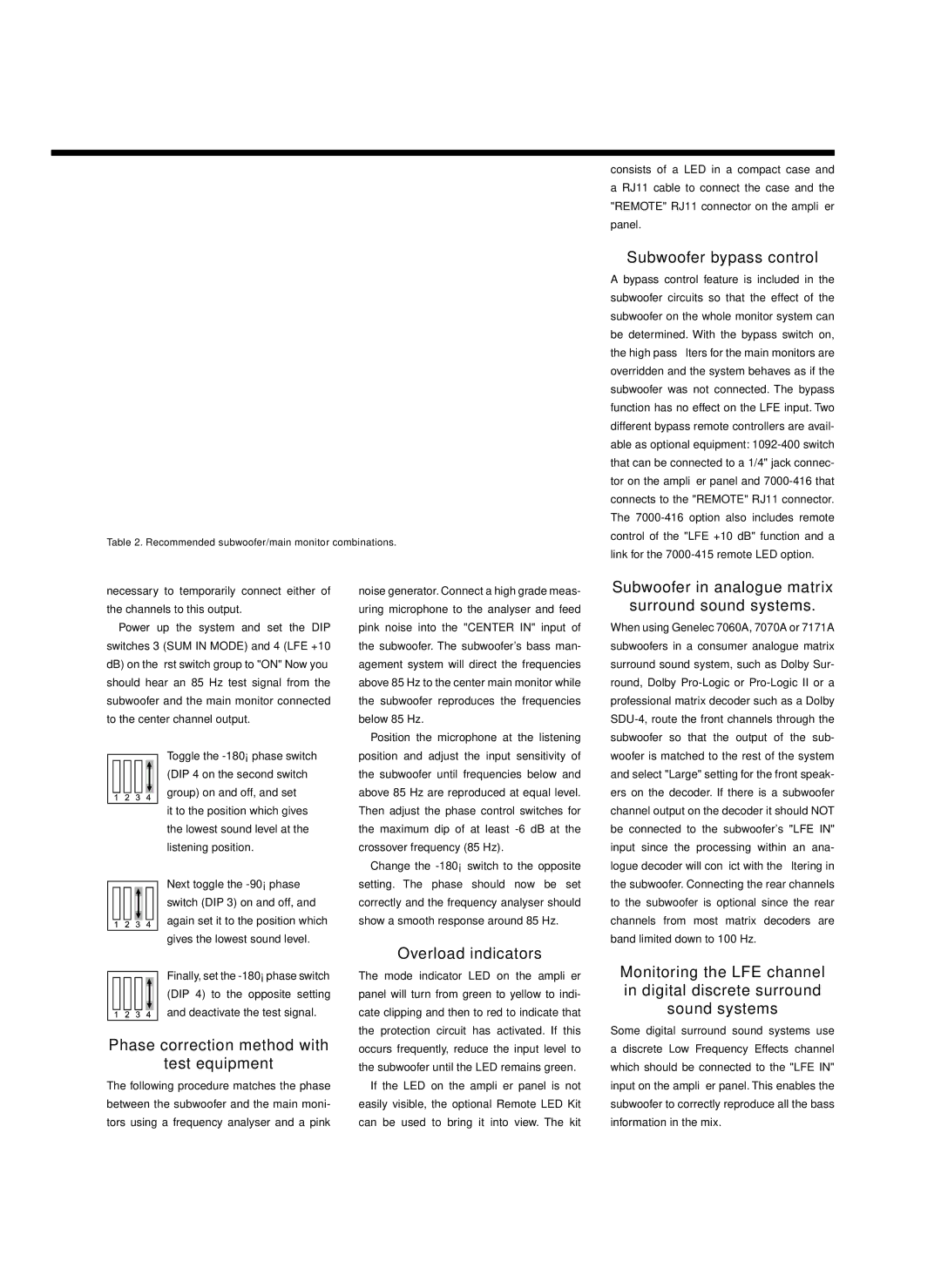7060A, 7070A, 7071A specifications
The Genelec 7060A, 7070A, and 7071A are subwoofers renowned for their exceptional performance in studio and home audio environments. Each model brings a unique blend of features, technologies, and characteristics tailored to delivering accurate low-frequency reproduction.The Genelec 7060A is a compact subwoofer that delivers a powerful bass response in smaller setups. It has a frequency response of 28 Hz to 85 Hz, making it ideal for music production and post-production environments. The 7060A features a high-quality 10-inch woofer and utilizes Genelec's Directivity Control Waveguide technology, which ensures consistent sound distribution across the listening area. Its robust built-in amplifier provides 100 watts of power, allowing it to integrate seamlessly with main monitors while maintaining clarity and impact.
Moving to the Genelec 7070A, this model offers an elevated performance level suitable for medium-sized spaces. It features an innovative 12-inch woofer and a frequency response extending from 25 Hz to 85 Hz. The 7070A incorporates Genelec's advanced Signal Intelligent Amplification technology, which optimizes the amplifier's performance in real-time, ensuring maximum efficiency and minimal distortion. This subwoofer is designed to produce tight, punchy bass, making it a favorite among professionals in film and music production.
Finally, the Genelec 7071A is designed for larger environments where more power and control are required. This model includes a 12-inch woofer and an impressive frequency response from 22 Hz to 85 Hz. The 7071A features Genelec's enclosure design principles, which minimize unwanted resonance and vibrations, delivering a clean and accurate bass response. Moreover, it integrates seamlessly with Genelec's Smart Active Monitoring systems, allowing for advanced room-tuning capabilities through its built-in DSP.
All three models are designed with Genelec's commitment to sustainability and durability, featuring non-toxic materials and recyclable enclosures. The minimalist design of these subwoofers not only makes them visually appealing but also enhances their adaptability in various sound environments.
In summary, the Genelec 7060A, 7070A, and 7071A subwoofers stand out as exceptional choices for anyone seeking high-quality low-frequency audio performance. Their advanced technologies and thoughtful design cater to both casual listeners and professional sound engineers, ensuring accurate and powerful sound reproduction.

